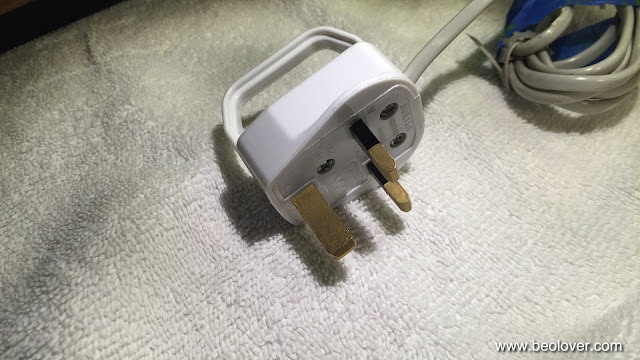Beolover's joyful summer travel has come to an end! Time to get back to the bench!
Last week a lovely Beogram 4002 (5501) arrived for some TLC from the UK. The exciting part here is that this particular unit is an early style 5501 model that has a few interesting design features that can be regarded as stepping stones between the original Beogram 4000 design and the later 4002 types.
The unit came well packed and shipping was arranged by parcelhero.com. I really like parcelhero. They offer fully tracked express service between the UK and the US. It usually only takes only an impressive 3-4 days door-to-door, and the price is about the same like standard international snail mail. Just outstanding. I really wish we had something like this in the US...
Anyway, after digging out the original B&O box from about 4 cubic yards of bubble wrap (better too much than too little!..;-), I extracted the 4002 from its styrofoam protectors and set it up on my bench:
The overall condition of the unit is pretty good, albeit the keypad has worn areas
and there is a bit of veneer missing from the plinth:
Under the hood is seems pretty original, at least there are no obvious signs of human creativity,
Except that there was a unique grounding wire installation, which used one of the support spring screws as terminal:
The brown cable let do a switch on the outside:
Obviously someone experienced intermittent grounding issues, possibly due to a RCA adapter missing a broken out grounding lead. I removed this construction.
While we are looking at cables, here is a picture of the interesting UK plug that was installed:
Looks a bit like a tea kettle, doesn't it??..;-)
I temporarily exchanged it with a US plug allowing me to operate the unit from a standard US outlet (I also put in temporary 500mA fuses replacing the original 250mA types that are used in the 220-240 environment to account for the double current that will flow while it is operated at 110V).
The exciting parts are the design specifics of this model. This shows the (broken, hence the tape) end groove detection set-up that is mounted on the spindle pulley:
The light bulb illuminates the spindle pulley, which has four holes. Through these the light illuminates a photosensor. This allows the detection of the spindle speed, which can be used to detect that the needle is in the end groove, where the carriage moves faster than usual. This mechanism replaces the servo-voltage based set-up that is used in the Beogram 4000. One could think of this mechanism as an analog rotary encoder...just awesome!
The metal plate in front of the encoder holds the springs that actuate the switches that are used for position detection, similar to the setup found in the Beogram 4000. This was later replaced by an optoelectronic mechanism using a plexiglass bar with blacked out regions to block light from a bulb or IR LED. Here is another view of this setup:
Upon further inspection I found that one of the springs that hold up the bolts that connect the hood hinge to the chassis is missing:
I usually replace these with springs from ball point pens...;-)
After this first look I tried to start the unit up. There were life signs, but the carriage was a bit sluggish...so the mechanical restoration of the carriage drive system and arm lowering mechanisms will be the first items to look at when I start this restoration.










No comments:
Post a Comment
Comments and suggestions are welcome!